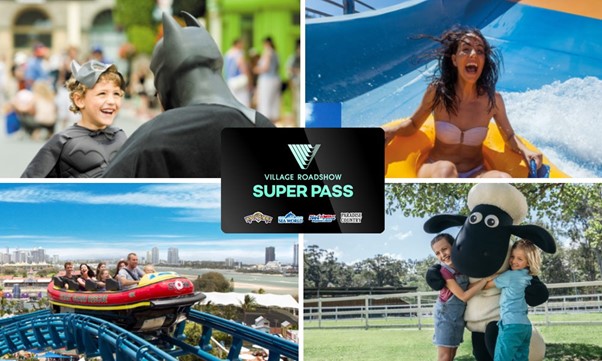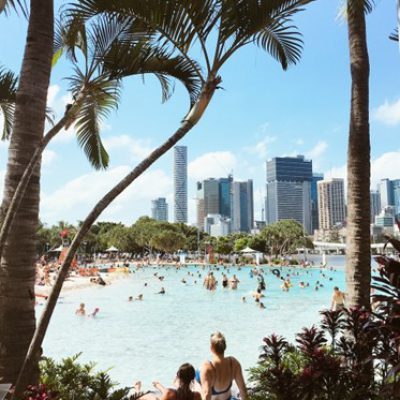Keep the kids entertained with a range of activities from indoor play centres to adventure-filled theme parks and zoos. Read on to find our tips to enjoy low-cost or completely free activities that Australia has to offer. Packed with family-friendly activities, including close encounters with wildlife, thrilling museums, and beautiful beaches. You and your little ones will definitely have an awesome time!
Roar and Snore at Taronga Zoo

Head out on a night safari to see some of Taronga Zoos Sydney’s 4,000 animals from more than 350 species during their Roar and Snore program. You can help during feeding time, get some up-close-and-personal encounters with the zoo’s animals, and enjoy incredible harbor views from the safari-style campsite. The next day, you can see some of the zoo’s cutest furry residents by daylight, like the red kangaroos and koalas.
Check out other great deals from Taronga Zoo here.
Cuddle a Koala

There’s nothing as iconic as cuddling a cute koala – and there’s no better place to do it than the Lone Pine Koala Sanctuary, Fig Tree Pocket, Queensland. Kids can pet or hold the fuzzy animals – there are around 130 of them – or check out one of the other 70-plus animal species living at the sanctuary, like kangaroos, platypuses, and dingos. Plan your visit around one of the hand-feeding times for the kangaroos, wallabies, and lorikeets for an extra dose of fun (and photo opportunities with the kids).
Receive your entry & cruise discount offer for just $99 here.
Walking with dinosaurs in Canberra
Got an aspiring palaeontologist in the family? Check out Canberra’s National Dinosaur Museum, just a 15-minute drive north of the city. The museum features a massive collection of interactive animatronic dinosaurs, along with 23 complete skeletons and over 300 displays of individual fossils. Kids can also roam through the interactive dinosaur garden for an encounter with Canberra’s famous big dinosaur Stan the T-Rex.
Become a Dinosaur Museum member and receive special discounts on things like bringing friends, gift shop purchases, and birthday parties.
Village Roadshow Theme Parks Super Pass

Keep an eye on the combination passes and deals for the Village Roadshow Theme Parks on the Gold Coast. You can make the most of every moment with unlimited entry to 4 incredible theme parks with the Super Pass! It’s all the fun and excitement you could ever need on your next Gold Coast holiday. Get your 7-day pass discount coupon here for just $99. It’s cheaper than front gate prices & is the best value pass you can get.
Queensland is home to all the best theme parks and attractions, and you can experience them all for the best price by getting yourself a Super Pass you’ll enjoy all the best action in Queensland. With over 80 rides, shows, and attractions, there’s something for everyone!
Visit South Bank, Brisbane

There are so many fun things to do at South Bank, Brisbane, whether you want to spend a whole day or head in for a few hours. From family-friendly playgrounds and free museums to gardens perfect for family picnics and get-togethers.
There are three main swimming areas at South Bank. The swimming lagoons and all the facilities are free and open seven days a week. Streets Beach is the name given to the artificial beach and lagoon. With a lifeguard on duty seven days a week, this swimmable lagoon has a maximum depth of 1.8m. The lifeguard’s hours change seasonally, so it is worth contacting South Bank, especially in the off-season if you have little ones to keep an eye on.
The Boat Pool is a second lagoon close to Streets Beach with a depth of 0 – 1.1 metres. And it also has a lifeguard.
Aquativity is the third water fun area at South Bank. This water play area is a popular spot in the hot summer months, featuring zero-depth with a splash zone with fountains, water jets, and tipping buckets.
Facilities are excellent at South Bank with free public toilet facilities, underground parking (not cheap), and close to public transport drop-off points. You can also hire a stroller for a fee from the visitor information centre.
South Bank offers two playgrounds. Picnic Island is a shaded playground located near BBQs and underneath a fig tree for all-day relaxed play. Riverside Green playground is the larger playground located right in the centre of South Bank. It features a multi-story play area with tunnel slides, hill slides, and swings. It is unfenced but with good visibility and plenty of places for parents to sit and watch nearby. It is also located close to toilets and cafes.
Darling Quarter Playground: Play and Splash
Sydney has so many amazing kids’ playgrounds and the best part about it, is that they are absolutely free! Visitors to Sydney who stay in the city or Darling Harbour will find the massive playground at Darling Harbour is an excellent space to let the kids run and play and burn off some energy.
There is a lot of water play there, some lovely river runs and splashing fountains, so do take your togs or a change of clothes.
There are several cafes and restaurants close to the playground, plus a kiosk serving drinks and snacks next to the playground. The range of play equipment is huge and suits children from toddlers to teenagers.
The one drawback is that this playground gets so busy at peak times, especially at the weekend. Get there early or late or during the week.





